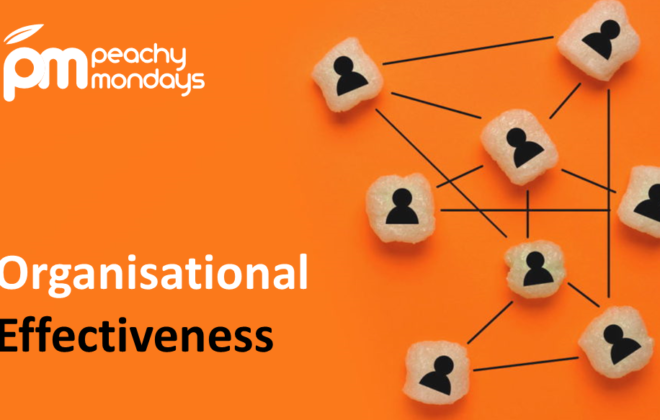From Feedback to Action – the route to employee listening
The first two years of this decade have seen more change in how people live and work than in the prior 100-years. The pandemic, the great resignation, hybrid work, and the 4-day week have brought unprecedented changes to our daily routine.
How are your employees handling all this change and consequent economic uncertainty?
In uncertain times, listening demonstrates that you care and understand the causes of employee frustration and anxiety. Critically it is those organisations that then take action that separates the leaders from the laggards in workforce and culture transformation.
“People don’t get survey fatigue; they get lack of action fatigue”
Traditionally, the annual employee engagement survey has been the go-to for people leaders to gather insight about their employees. But the traditional survey is no longer meeting the needs of businesses in forward-thinking organizations seeking to improve performance.
Today, employee listening must match the expectations of modern employees who want to contribute and grow in a more human-centered, inclusive, equitable and agile organization.
Annual surveys may reveal what employees are thinking, but they don’t reveal the why and that means it’s hard to take effective action.
So let’s look at a different way of employee listening.
For people to feel heard, you need deep insight, fast
Peter Drucker, once said, “The most important thing in communication is hearing what isn’t said”. This is especially true when workers are remote and face-face meetings with managers are rare. How do you get the pulse of employee sentiment?
It is not unusual to hear stories about 100-question surveys being sent to 20,000+ employees, and that the process took so long to analyse and gain consensus, that the process was halted and only taken up again a few weeks prior to the next annual survey a year later. Does this sound familiar?
Imagine if HR leaders and managers could receive completely anonymous deep insight in real-time, immediately re-engage with an individual or problem cohort to get to the root cause and then with consideration, take action to address issues. This is the foundation of cultural transformation and a prerequisite for business transformation.
Anonymous follow-up conversations reveal more insight
The modern approach to listening uses numerous mechanisms for synchronous and asynchronous listening where employees remain completely anonymous, but their sentiments can be shared at any time, quickly analysed to gain a deeper understanding of problems, and those same employees re-engaged in conversations about solutions.
Let’s say you’re Jane, the HR director of an organisation that’s going through a culture transformation program. Your employee engagement survey shows that 20% of employees are dissatisfied with the change communications they have received. So, you work with key colleagues in your HR and internal communications teams to initiate anonymous conversations with those dissatisfied respondents.
Sue, your head of internal communications conducts the follow-up…
Hi, I’d like to ask a question to help me better understand your initial response. Your anonymity is maintained. Could you explain a bit more about what you don’t like and how could we improve our change communications?
Sue (Head of Internal Communications)
The employee receives an email indicating that they have a new message from Sue. They can access their message at a time and place that suits them and choose whether to respond or not. (In our experience, around 40% of employees will take the time to answer). Jane and Sue can read responses in their conversation inbox and, of course, the anonymity of respondents is maintained unless they choose to share their identity, which some employees do.
In this example, Jane and Sue learned that employees were looking for more frequent, factual communications, and it was important that communication deadlines were met. They also learned that employees valued face to face communications from leaders, together with the opportunity to ask questions. Some employees also complained that they did not have access to the communication channels that were being used to share information.
Closing the feedback loop
The effort you expend in gathering and understanding employee feedback will quickly be undermined unless you act on it. A complaint frequently heard when speaking with employees of large enterprises is they give their feedback in the survey, but nothing ever happens. Cynicism then builds which affects participation in future surveys and diminishes faith in leaders that action will be taken.
In our example, the head of internal communications acted on the issues raised. Employee satisfaction with the change communications they received dramatically increased as the programme progressed.
Democratising insight and supporting action
There are several reasons why, despite best intentions, action is not taken in response to employee survey feedback. Often, there is so much information, it’s hard to know where to start. Equally, surveys are often managed centrally by HR, and it takes time to cascade results through the organisation. And our time-poor line managers may lack the capacity or capability to understand and act on their results.
Leaders in cultural transformation push the insights down to the managers responsible for interpreting and acting on feedback via dashboards. These dashboards are easy to use and managers can see how their team’s results compare with previous surveys as well as the wider organisation. Sophisticated analytics highlight the priority areas that will have the greatest impact on their team’s employee engagement. Imagine if the dashboard also had embedded hints and tips that help managers to take effective action, and linked to your organisation’s information and learning resources.
Imagine…
- your employee survey closes on Monday evening
- on Tuesday morning, your managers can view their teams’ results
- they discover that increasing the frequency and quality of employee feedback would have the greatest impact on their teams’ engagement
- they take an e-learning course on delivering feedback, and,
- implement what they have learned that afternoon. Powerful!
From Feedback to Action
We need to move ‘from feedback to action’ and think more holistically about employee fulfilment to drive cultural transformation and it starts by listening better to employees.isten better. Act faster. Drive engagement & effectiveness.
To find out more about the benefits of Peachy Mondays for your organisation please get in touch today.
If you’ve found this article helpful, please sign up to our newsletter to stay informed of the latest insights from Peachy Mondays.
Related Posts
Categories
- Case Study (13)
- Change and transformation (21)
- Connectedness (4)
- Culture (17)
- Design (10)
- Diversity and Inclusion (1)
- Effectiveness (16)
- Employee engagement (60)
- Employee experience (43)
- Employee Feedback (51)
- Employee Wellbeing (1)
- Events (10)
- Financial Wellbeing (1)
- Happiness (4)
- Internal Communications (10)
- News (24)
- Onboarding (1)
- Organisational Effectiveness (18)
- Uncategorized (3)




